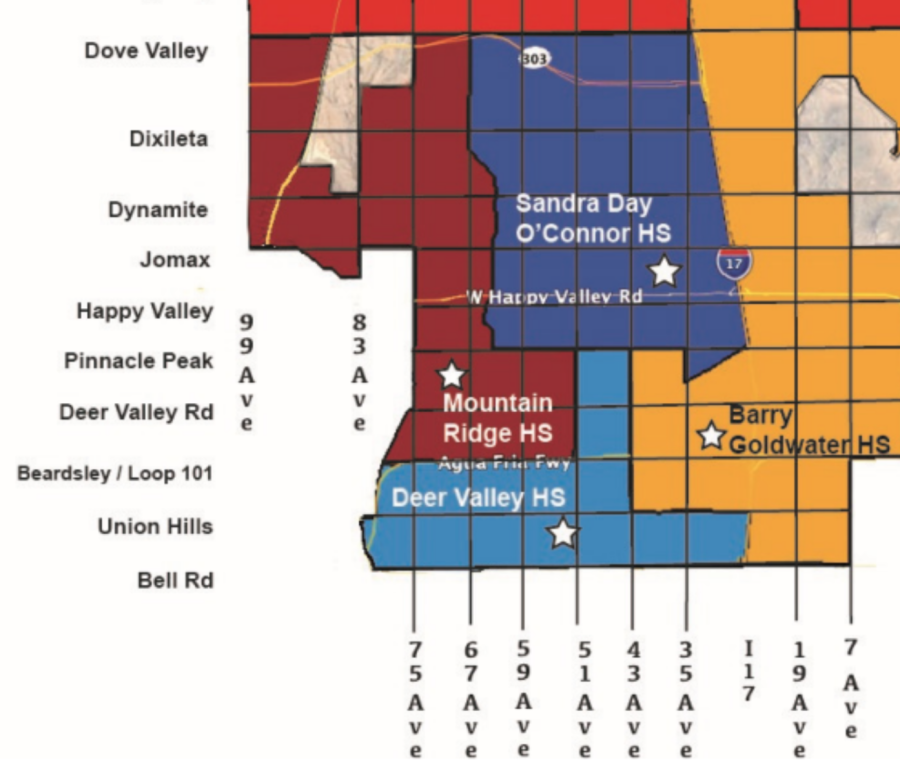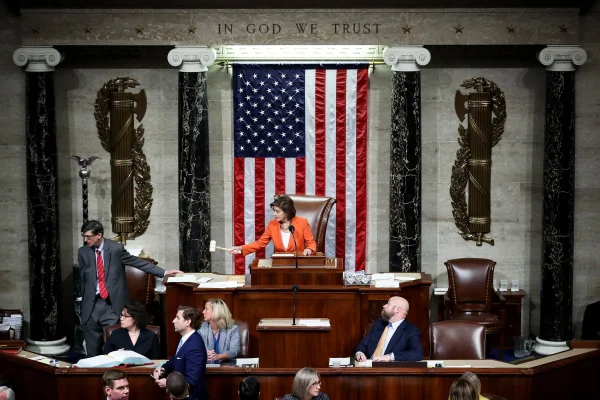Open Enrollment harms OHS students
March 31, 2023
Arizona has long been a state that has championed school choice, but are open enrollment practices actually benefiting students? In 1994, the Arizona legislature enacted new laws that not only allowed for the creation of charter schools, but also made it easier for parents to send their children to schools outside of their boundaries. Since then, students across Arizona have had the ability to attend almost any school outside of their designated public school, including other schools in their district, charter schools, and even online programs.
Closer to home, in 2018, according to a district demographic and enrollment analysis, as much as 18% of the OHS student body were open enrolled students, but in recent years that percentage has likely increased. In 2020, the Deer Valley Unified School District (DVUSD) altered high school boundaries, diminishing OHS’s boundary to a fraction of what it had been since the school opened. Students west of Pyramid Peak Parkway, a considerable part of the school, were all rezoned to attend Mountain Ridge High School. Although the district allowed attending students, as well as any eighth graders who were previously zoned for OHS, to remain at whichever school they were at, the consequences of the rezoning are already being felt. In the current school year, many families have been split, with an older sibling at OHS and a younger one at Mountain Ridge. With all the headaches and complications a rezoning like the one that took place cause, it should be asked why such an action was necessary.
Although OHS’s student enrollment had grown by about 300 students in the two years leading up to the boundary change, the school was still accepting new open enrollment students each year. By the time of the change, OHS’s freshmen class of 2023 reached a high of 755 students; the school was bursting at the seams with not enough space for each student. This presented a problem for the district, which is funded by how many students it enrolls, as OHS had long been the school of choice for many families in the Barry Goldwater boundary, especially students coming from Norterra Canyon and Sonoran Foothills schools. If OHS stopped being able to accept open enrollment students, many of those students would choose to attend charter schools instead, causing the district to lose students and revenue. OHS was over capacity and instead of reducing the amount of open enrollment students the school accepts, the district decided to alter boundaries that had been in place for nearly 20 years. It has never been explicitly stated that the open enrollment students were the reason for the boundary change, however, the numbers do not lie.
In the present, three years since the boundary change, OHS’s student population has stood relatively stable with 2,594 students at the beginning of the 2022-2023 school year—only 108 students less than its peak of 2,702 before the boundary change. This indicates that the percentage of open enrollment students at OHS has increased significantly. Despite enrolling over 100 students less than it did three years ago, OHS remains overcrowded. The school needs to stop accepting more students than it can handle. Although the school has been innovative with its space, as the faculty dining room and mini-auditorium have been reimagined as classroom spaces, it has still not been enough to prevent the existence of teachers without set classrooms that travel from room to room whenever a different teacher has a prep period. Aside from travel teachers, the overcrowded nature of the school can be seen and felt during any passing period, when students have to cram into narrow hallways and squeeze through staircases with thousands of other students. Although the school has had two small additions added, one to the 600/700 building and another to the Main Gym, it is evident that the school was not built for such a large number of students by the parking problem students and staff face each year. As the number of students at OHS have increased over the years, the school has struggled building an additional lot as well as expanding the main parking lot. By allowing more and more students in, the school takes the opportunity of having a parking spot away from other students who are actually attending their designated school. Allowing more students to attend OHS when conditions are already so tight, disadvantages students who actually live in OHS’s boundary.
The reasons that cause so many students to open enroll into OHS can also shed light onto why the boundary change was such a poor decision. Many students that are open enrolled explain that Barry Goldwater’s ‘poor reputation’ was what motivated them to go through the paperwork of the open enrollment process. However, this is a sad excuse for what are likely the real reasons. Most open enrolled students from the Barry Goldwater boundary are coming from Norterra Canyon, Sonoran Foothills, and the recently opened Union Park, three schools whose demographics are much more similar to OHS’s than Bary Goldwater’s. All three of those schools are overwhelmingly white with low rates of students eligible for free or reduced lunches. In contrast, Barry Goldwater’s minority students make up a majority of the student body and the school is a Title I school, a designation given to schools that enroll a large number of lower-income students. Although Barry Goldwater has historically had slightly lower results on state-mandated standardized tests, the school is the only International Baccalaureate (IB) school in the district, a program of study more difficult than the ordinary Advanced Placement (AP) classes that OHS’s students are afforded. It is clear that the ‘poor reputation’ many people speak of is not Barry Goldwater’s academic standings, but rather its diverse student body.
By adjusting high school boundaries, the district gave in to the desires of the largely white and wealthy families that wish to open enroll into OHS. The district is in turn allowing for a form of discrimination that remains not talked about. This not only disadvantages students who live in OHS’s boundary and are forced to attend an overcrowded school, but it also disadvantages students at Barry Goldwater as many of the families choosing not to go there are the ones who have the resources to raise funds, donate to programs, and even volunteer. Not only does OHS need to stop accepting as many open enrollment students, but the district also needs to stop facilitating a harmful practice that is based on elitist reasoning. Students of different ethnic, racial, or economic backgrounds interacting is an asset to a school, and it is both a shame that some parents choose to avoid it as well as the fact that there is less of it at OHS.













